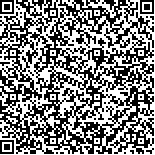下载中心
优秀审稿专家
优秀论文
相关链接
摘要

以LANDSAT卫星遥感数据为信息源, 在归一化差异水指数(NDWI)计算的基础上, 采用“全域—局部”的分步迭代空间尺度转换机制, 将全域分割、全域分类、局部分割与分类等计算过程有机地结合起来, 分阶段地融合了水体信息提取所需的不同层次知识, 并建立迭代算法实现了水体最佳边缘的逐步逼近, 获得了高精度的水体信息提取。通过对青藏高原试验区湖泊信息提取的实验表明, 该方法除了能够实现对复杂多样的水体信息进行高精度自动提取外, 还可有效避免与阴影等信息的混淆。
High-precision and automation are very important objectives of remote sensing information extraction research. This paper takes LANDSAT ETM as remote sensing data source, and uses spatial scaling (scale transformation) mechanism of “whole—local” based on Normalized Difference Water Index (NDWI). Combining the segmentation and classification at whole and local scales respectively, this study fuses the hierarchical knowledge of water extraction and sets up an iterative algorithm to achieve the gradually approach of the water body’s optimal margin, so that we can extract the high-precise water body information. The experiment of plateau lake information extraction demonstrated that the complex and various information of water body could be extracted accurately, and the confusion between water body and shadow information could also be effectively avoided.

